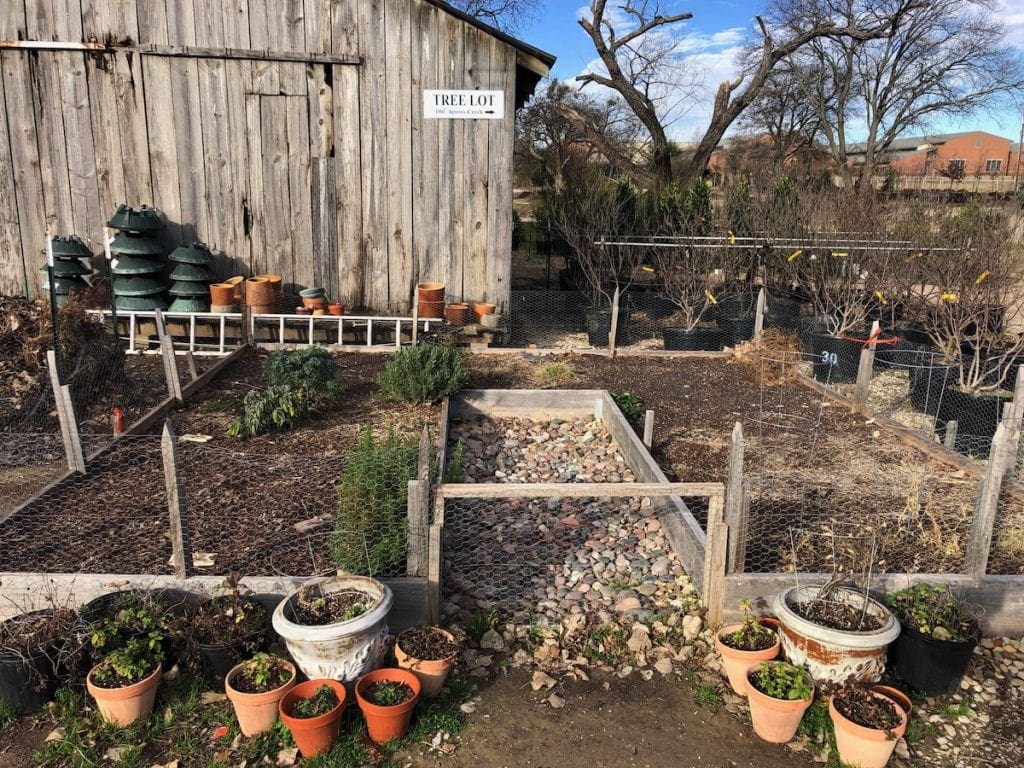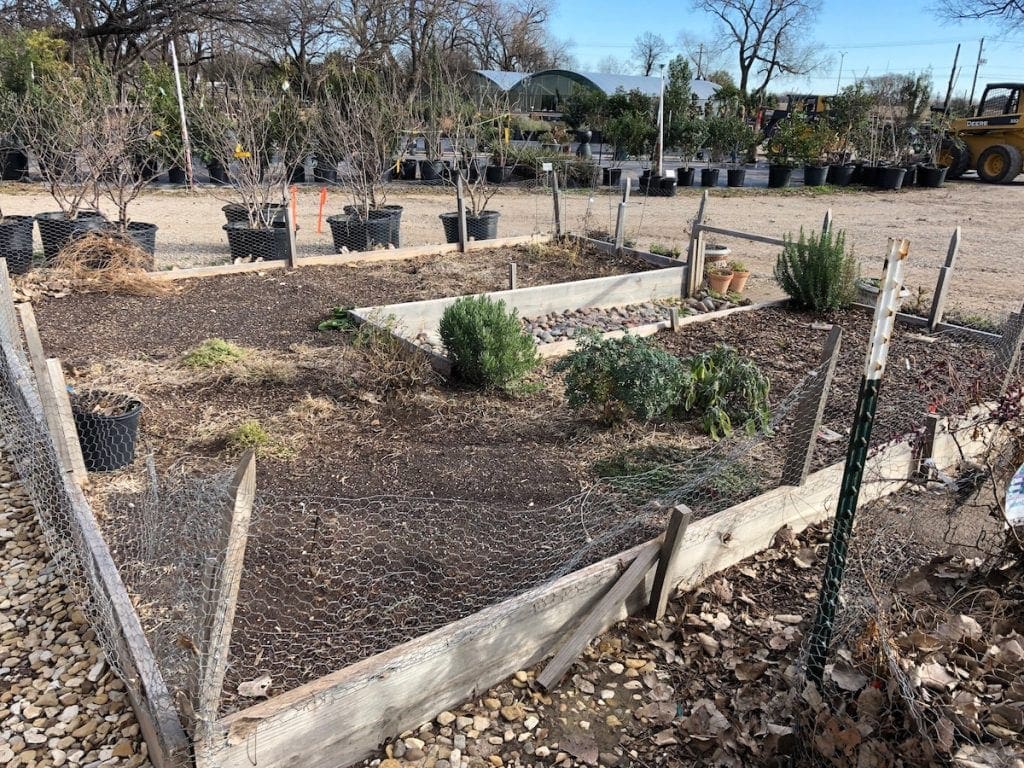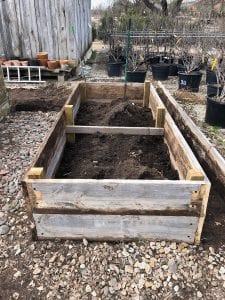We recently renovated and completely overhauled the vegetable garden at Shades of Green. Why? Because the old version, call it staff-veggie-garden-1.0, just wasn’t working. Since the mistakes that were made are the same mistakes I’ve seen other new gardeners make, they’re worth pointing out.
First, the beds were too wide. A raised bed vegetable garden shouldn’t be wider than 4 feet. Why? Because the average reach of an adult is 2 to 3 feet. If your raised bed is 6 feet wide, you’re going to have a very hard time reaching plants growing in the middle. You’ll then end up stepping into the bed to reach those plants thereby compacting the soil. The whole point of having a raised bed is so that the soil won’t be compacted. (Which is why it’s easier to grow vegetables in raised beds instead our heavy clay North Texas soil.)

Second, because the beds were so wide and accessibility so difficult, they were way under-planted. In my experience, most people under-plant their raised bed gardens even if they are properly sized (4 feet wide or less). They do this because they can’t really visualize how much space plants actually need and overestimate. Square Foot Gardening solves this problem by placing a permanent and prominent grid in the raised bed that breaks up the space into individual one foot squares. Following the Square Foot Gardening principles, you then plant each square with either 1, 4, 9, or 16 plants. This substantially increases the density of the planting, leaving no wasted space.

Third: Rabbits, rodents, and critters, oh my! The garden, being low to the ground at only 1’ high, and Collin County being overrun with rabbits, meant that what little was grown in the garden fed wildlife, not staff. The solution was to place a chickenwire fence around the garden. This did succeed in keeping rabbits out, but did nothing to stop mice and other vermin that could now eat crops without any competition. Furthermore, the 3 foot high fence made it impossible to access the outside edge, which quickly led to the garden becoming a lost cause.

To address all these issues, we demolished the old raised beds and reused that wood to make a 4’ wide x 10’ long x 2’ high raised bed. Next to it, we built a brand new bed 4’ wide x 10’ long x 37” high. The higher raised bed solves the issue of rabbits because they can’t climb. It’s also a good option for older gardeners who can’t (or would rather not) bend over to tend a ground-level garden. It’s also an option for those with small children or large dogs, as it will keep the vegetables safe from trampling by little feet or big paws.
The soil in the old raised bed was in great shape, having been treated with regular doses of compost tea and organic fertilizers all last year. The old beds supplied 70% of the soil for the new beds. We topped off with compost and Pro Bed Mix, added a square foot grid made from bamboo, and began planting.
As of this writing, we have cool weather crops in the ground – broccoli, kale, onions, cabbage, lettuce, carrots, Swiss chard, and radishes. By April 1, we’ll be planting tomatoes, peppers, squash, okra, eggplant, cucumber, and watermelon.
We’ll post updates throughout the growing season, or you can simply stop by Shades of Green and see how our garden grows.
Tim Wardell is a Texas Certified Nursery Professional and a Certified Square Foot Gardening Instructor who’s been gardening for most of his life.
